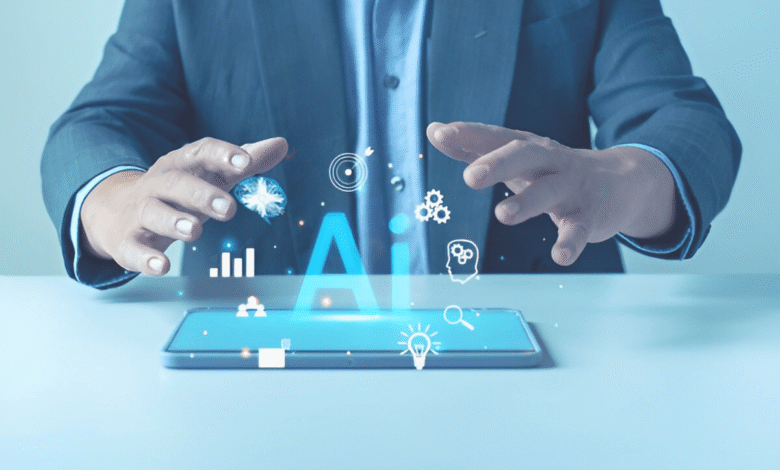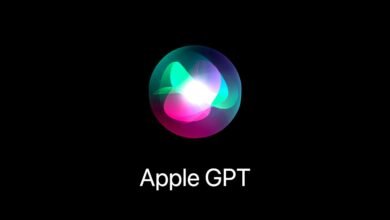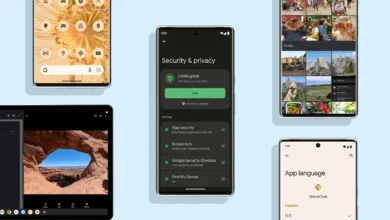How Generative AI is Transforming Web Design in 2025
Generative AI is revolutionizing web design with automated layouts, AI-powered personalization, and smarter SEO. Discover web development.

Generative AI is revolutionizing the field of web design, ushering in an era of unprecedented creativity and efficiency. By 2025, AI-powered tools are no longer just assistants—they are co-creators, capable of generating entire website layouts, optimizing user experiences, and automating repetitive tasks. This shift allows designers to focus on innovation while AI handles execution, resulting in faster project turnarounds and more dynamic digital experiences. Businesses that embrace Generative AI in web design gain a competitive edge, delivering visually stunning and highly functional websites with minimal manual effort.
The rapid evolution of AI-driven design tools is reshaping how websites are built, making the process more intuitive and data-informed. From personalized user interfaces to automated SEO optimization, Generative AI ensures that every aspect of web design is smarter and more adaptive. As we move deeper into 2025, the integration of AI in web development is no longer optional it’s a necessity for staying relevant in an increasingly digital world. This explores the key ways Generative AI is transforming web design and what it means for the future of the industry.
How Generative AI is Transforming Web Design in 2025
Automated Layout and Design Generation
One of the most significant impacts of Generative AI in web design is its ability to create entire layouts with minimal human input. Tools like AI-powered website builders analyze user preferences, industry trends, and branding guidelines to generate multiple design options in seconds. Designers can then refine these suggestions, drastically reducing the time spent on initial mockups. This automation doesn’t just speed up the process—it enhances creativity. By providing a variety of AI-generated templates, designers can experiment with different styles, color schemes, and structures without starting from scratch.
Personalized User Experiences
In 2025, personalization is no longer a luxury it’s an expectation. Generative AI enables websites to adapt dynamically based on user behavior, location, and preferences. Machine learning algorithms analyze visitor data to adjust layouts, content, and even navigation in real time. For example, an e-commerce site powered by AI-driven personalization can showcase different product recommendations or promotional banners for each visitor. This level of customization improves engagement, reduces bounce rates, and boosts conversions. AI-powered web design ensures that every user feels like the site was built just for them.
Enhanced Responsive Design
With the increasing variety of devices and screen sizes, responsive design has become more complex. Generative AI simplifies this by automatically optimizing websites for different resolutions, ensuring seamless performance across desktops, tablets, and smartphones. AI tools can predict how design elements will render on various devices and suggest adjustments to improve usability. This eliminates the need for manual testing, allowing designers to focus on aesthetics and functionality rather than technical constraints.
AI-Generated Content and Copywriting
Content is a crucial component of Web design, and Generative AI is revolutionizing how it’s created. Advanced language models can generate SEO-friendly headlines, product descriptions, and even blog posts tailored to a brand’s tone. This not only speeds up content creation but also ensures consistency across the website. Additionally, AI can analyze user engagement metrics to refine content strategies. If certain sections of a webpage underperform, AI-driven insights can suggest improvements, making the site more compelling and effective.
Streamlined Prototyping and Testing
Prototyping is a critical phase in web design, and Generative AI is making it faster and more efficient. AI-powered tools can instantly convert wireframes into high-fidelity prototypes, allowing designers to visualize concepts quickly. Moreover, AI can simulate user interactions and predict potential usability issues before development begins. This proactive approach reduces costly revisions and ensures a smoother user experience from the outset.
Intelligent SEO Optimization
Search engine optimization (SEO) is a key factor in a website’s success, and Generative AI is enhancing how designers approach it. AI tools can analyze competitors, suggest keyword placements, and optimize meta tags automatically. By integrating AI-powered SEO recommendations into the design process, websites are more likely to rank higher on search engines. This seamless blend of design and optimization ensures that websites are not only visually appealing but also discoverable.
Voice and Visual Search Integration
As voice search and visual search gain popularity, Generative AI is helping designers adapt. AI can optimize websites for voice queries by structuring content in a conversational tone and improving schema markup. Similarly, for visual search, AI enhances image recognition and tagging, making it easier for users to find products or information through pictures. These advancements ensure that websites remain competitive in an evolving search landscape.
Faster Development Cycles
Traditional web design projects can take weeks or months, but Generative AI is accelerating timelines. By automating repetitive tasks like coding, image optimization, and A/B testing, AI allows developers to focus on innovation. This efficiency is particularly beneficial for startups and small businesses that need high-quality websites without extensive resources. AI-driven development ensures rapid deployment without compromising quality.
Ethical and Inclusive Design
Generative AI is also promoting inclusive design by identifying accessibility issues and suggesting improvements. From color contrast adjustments to screen reader compatibility, AI ensures websites are usable by everyone. Additionally, AI can detect biased language or imagery, helping brands maintain ethical standards. This focus on inclusivity not only enhances user experience but also strengthens brand reputation.
The Future of AI in Web Design
Looking ahead, Generative AI will continue to evolve, introducing even more advanced capabilities. We can expect AI to play a larger role in real-time collaboration, 3D design, and predictive analytics. As AI becomes more intuitive, the line between human and machine creativity will blur. Designers who embrace these tools will lead the industry, delivering cutting-edge websites that captivate and convert.
Read More: Top 10 Free AI Tools in 2025 That Are Blowing Minds
Conclusion
Generative AI has undeniably reshaped the landscape of web design in 2025, turning what was once a time-intensive process into a streamlined, intelligent workflow. By automating complex tasks like layout generation, responsive design, and content optimization, AI has empowered designers to focus on strategic creativity rather than manual execution. The result? Websites that are not only visually stunning but also hyper-personalized, accessible, and optimized for peak performance. As businesses continue to adopt these AI-driven solutions, the bar for digital experiences keeps rising making Generative AI an indispensable tool in every designer’s arsenal.
Looking ahead, the influence of Generative AI in web design will only deepen, with advancements in predictive design, real-time collaboration, and even more sophisticated personalization. Designers who embrace these AI-powered tools will lead the charge in creating next-generation websites that captivate users and drive conversions. The future of web design isn’t about replacing human creativity it’s about enhancing it with intelligent automation.
FAQs
How is Generative AI changing web design workflows?
Generative AI automates repetitive tasks like layout creation and coding, allowing designers to focus on creativity and strategy while significantly reducing production time.
Can AI completely replace human web designers?
No, AI enhances human creativity by handling technical tasks, but human oversight remains crucial for brand alignment, emotional appeal, and nuanced decision-making.
Does AI-generated web design affect SEO performance?
Yes, AI optimizes websites for SEO by automatically structuring content, improving metadata, and ensuring mobile responsiveness boosting search rankings.
How does AI personalize user experiences in web design?
AI analyzes visitor behavior in real-time to dynamically adjust layouts, content, and recommendations, creating tailored experiences for each user.
What’s next for AI in web design beyond 2025?
Expect advancements in voice/AR integration, predictive UX design, and AI that learns brand aesthetics to generate even more sophisticated, autonomous designs.











